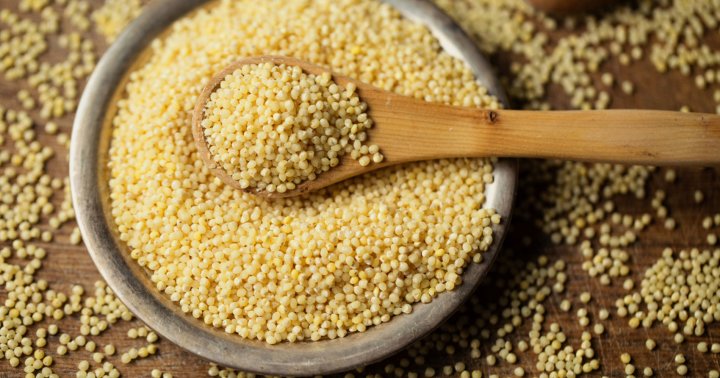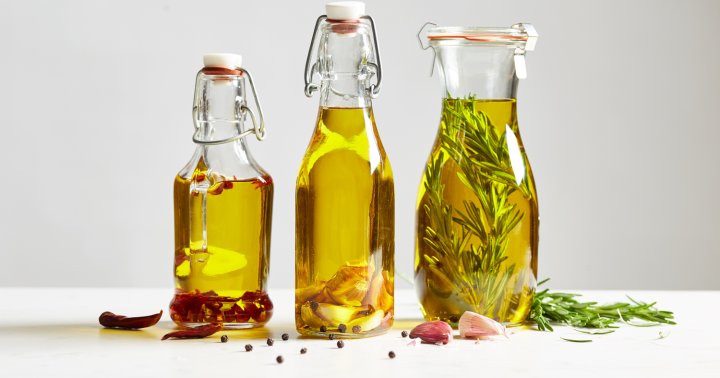Are AHAs Or BHAs Better For Aging Skin? Here's What Derms Say
Adding just one exfoliant to your skin care routine can result in a long list of benefits.


mbg Assistant Beauty Editor
mbg Assistant Beauty Editor
Hannah Frye is the Assistant Beauty Editor at mindbodygreen. She has a B.S. in journalism and a minor in women’s, gender, and queer studies from California Polytechnic State University, San Luis Obispo. Hannah has written across lifestyle sections including health, wellness, sustainability, personal development, and more.
Image by svetikd / istockphoto March 23, 2023 Our editors have independently chosen the products listed on this page. If you purchase something mentioned in this article, we may Adding just one exfoliant to your skin care routine can result in a long list of benefits: A brighter complexion, softened texture, fewer breakouts, and even softer fine lines and wrinkles. But just as your moisturizer and face wash should be personalized to your skin’s needs, as is with this step. If you opt for chemical exfoliation, you’ll have two main categories to choose from: AHAs and BHAs. To come, the difference between these two exfoliators and which one you should choose based on your skin type and skin goals. 
Advertisement
This ad is displayed using third party content and we do not control its accessibility features.
What are BHAs?
Beta-hydroxy acids1 are chemicals that are lipophilic, meaning it's oil- and fat-loving. "These are really good at breaking through oil and sebaceous skin," says board-certified dermatologist Mona Gohara, M.D.
Salicylic acid is the most common BHA, particularly known for its role in easing breakouts2, due to its ability to unclog pores. "It is able to penetrate the skin deeper into pores to help remove dead skin cells, fight bacteria, and control excess sebum," says board-certified dermatologist Zenovia Gabriel, M.D.
As she notes, salicylic acid is also found to be antibacterial, making it particularly effective for acne-prone individuals, as it not only dissolves excess oil, but it targets the acne-causing bacteria building up in the pores. These exfoliating acids are also great at smoothing out the rough, bumpy skin associated with keratosis pilaris.
Examples of BHAs.
Salicylic acid is certainly the most popular BHA, but it's not the only one.
Advertisement
This ad is displayed using third party content and we do not control its accessibility features.
Benefits of BHAs.
BHAs do more for your skin than just exfoliate, too. Below, a few benefits to note:
Salicylic acid has been shown to regulate oil production4, one key factor for easing acne breakouts and excess shine.
Advertisement
This ad is displayed using third party content and we do not control its accessibility features.
Salicylic acid and acne go together like peanut butter and jelly. Salicylic acid is antimicrobial, and according to board-certified dermatologist Karan Lal, M.D., it can go deep into your pores and break open closed comedones (again, since the BHA is oil-soluble). This also helps to reduce the appearance of that pesky acne-induced hyperpigmentation.
Then you have the obvious benefit: A smoother complexion. Unlike physical scrubs, BHAs and AHAs work to reveal smoother skin over time, so be patient if you don’t see ideal results after just one use.
Advertisement
This ad is displayed using third party content and we do not control its accessibility features.
4.
Help products penetrate.
One of the most important benefits of regular exfoliation, be it with BHAs, AHAs, or manual scrubbing products, is this: Once the dead skin is gone, your other serums and moisturizers can penetrate deeper into the skin (i.e., work better).
Usage tips for BHAs.
What Are AHAs?
"Alpha-hydroxy acids are lipophilic, meanig they mingle well with water and remain superficial on the skin surface," board-certified dermatologist Brendan Camp, M.D., FAAD, tells mbg. These are great for anyone with sensitive skin looking for gentle exfoliation and some healthy skin aging effects, Camp notes.
These ingredients can be found in cleansers, serums, masks, and even moisturizers. They vary in strength, with products designed for sensitive skin containing a less potent dose of AHAs than those formulated for normal or oily skin types.
Advertisement
This ad is displayed using third party content and we do not control its accessibility features.
Examples of AHAs.
There’s many more commonly used AHAs than there are BHAs, so here’s a quick explanation of a few key players:
Benefits of AHAs.
Each AHA has its own unique profile, but there are a few overarching benefits when it comes to AHAs:
Like BHAs and physical scrubs, AHAs help to slough off dead skin cells to reveal a fresh layer of skin. Once this happens, your skin will feel smoother and your other skin care products will be able to reach deeper into your skin.
Some AHAs can even be hydrating for the skin7, which is why they’re generally advised for anyone with dry skin (rather than their BHA cousins).
Research even notes that AHAs can help ease fine lines and wrinkles7. While you won’t want to combine this ingredient with another healthy aging product like retinol, it can be used in the same routine on different nights or in the morning.
Usage tips for AHAs.
How to combine them.
Should you mix both AHAs and BHAs? Not exactly. "Don't DIY your acid combination," board-certified dermatologist and mindbodygreen Collective member Whitney Bowe, M.D., FAAD warned. "The acids need to be formulated in a way that makes them stable together." Read: Don't layer an AHA over a BHA—look for a product that has them both, or pick one.
As a general guideline, those with acne or excess oil should opt for BHAs. Those looking for other benefits like smoothing texture, brightening the skin, or easing fine lines should start with AHAs.
In addition, anyone with sensitive or highly reactive skin should look for a gentle AHA product, preferably one packed with other hydrating ingredients like hyaluronic acid, peptides, ceramides, etc.
Or, you can rotate them. “If someone wants to use a more gentle AHA every day but then use a BHA when they're breaking out, they certainly can do that,” Gohara notes.
How to use BHAs and AHAs in your routine.
Like any skin care product, you’ll want to create a designated spot for these exfoliators. Everyone follows different reigimnes, but here’s a few must-know tips to keep in mind:
Side effects and cautions.
Exfoliation, in any form, can cause irritation. It’s important to listen to your skin and stop using a chemical exfoliant when you notice redness, irritation, or sensitivity.
FAQ
What are AHAs and BHAs?
Alpha-hydroxy acids (AHAs) and beta-hydroxy acids (BHAs) are chemical exfoliants that help to slough off dead skin cells when applied topically. BHAs are generally recommended for those with acne or excess oiliness, while AHAs are better fit for anyone looking to brighten their complexion, ease fine lines and wrinkles, or smooth texture.
Can you use BHA and AHA together?
You should not mix separate AHA and BHA products together. These ingredients can be used in the same formula, but mixing pre-formulated products together at home is not recommended, as the formulas were not designed to mix and may be irritating to the skin. If you want to use both AHAs and BHAs, find a product that comes with both ingredients or use AHAs most of the time and BHAs when you’re breaking out.
Is salicylic acid an AHA?
No, salicylic acid is not an AHA, or alpha-hydroxy acid. Instead, it falls into the BHA, or beta-hydroxy acid category.
The takeaway.
Exfoliation is a great step to add to your routine, but do so whilst noting your skin type and concerns. If you have oily skin or you’re acne-prone, opt for BHAs. If you have sensitive skin or you’re looking for improvements in brightness, texture, or fine lines, opt for AHAs. Still not sure how often you should be using them? Here’s a bit more information on cadence to help you out.

 Hollif
Hollif 
































